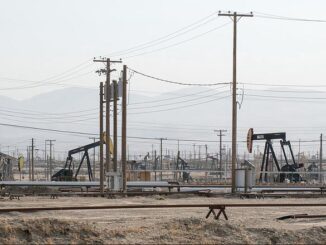In today’s world, every search query, every time music is played via an online platform on a smartphone, requires significant energy costs. The International Energy Agency (IEA) warns: artificial intelligence and data storage are now comparable to an entire nation in terms of energy consumption. What will be the consequences of this rapid growth? It is time to ask whether we are able to maintain a balance between the rapid development of technology and conserving the resources of our planet.

How extensive will the growth be?
According to the IEA, in 2022, data centers, artificial intelligence, and cryptocurrencies accounted for about 2% of global electricity demand. The agency’s forecasts suggest that these volumes will double by 2026. Such dynamics may equate the energy needs of digital technologies to those of a country the size of Japan. IEA sources note that, for the first time, the share of digital solutions was taken into account in global calculations. This makes it possible to track how the invisible part of the technological revolution is changing the structure of global energy consumption.
The scale of artificial intelligence infrastructure
Today, every service—from cloud documents to automatic movie recommendations—requires not only software but also uses a complex physical infrastructure. And the diversity of these services is constantly growing, including mobile games on Android or iOS.
Several years ago, there was explosive growth in the popularity of virtual gambling. The iGaming industry grew particularly rapidly in densely populated Asian and African countries. As our sources at Melbet India report, dozens of new online casinos have opened in India over the past several years, competing with Melbet and other leaders. And this trend will continue, requiring ever more computing power.
However, this growth is still far from matching the scale of artificial intelligence infrastructure, which already requires dedicated data centers for its operation. And the more complex and large-scale AI models become, the more computing power they need.
Data centers are huge complexes housing thousands of servers. Their construction and operation involve plastics, metals, cables, and significant volumes of water for cooling equipment. Electricity becomes the main expense as the amount of data being processed and stored grows. In this context, the balance between technological progress and protecting the environment becomes especially important.
Why generative AI requires more energy
Generative artificial intelligence has become a leader in the accelerated growth of energy consumption. So-called large language models require enormous computing resources for both training and everyday operation. For example, training a single large AI model may require about 1,300 megawatt-hours, which is equivalent to the annual energy consumption of 130 households in the United States.
According to IEA estimates, a query to ChatGPT uses roughly ten times more electricity than a regular search on Google. If today’s entire volume of internet queries were handled by neural networks, it would impact the global energy consumption pattern. One researcher explains: generative AI uses 30–40 times more energy for similar tasks compared to classical algorithms.
What systems are critical for neural network operations
An increasing number of data centers with expanding infrastructure are being created around artificial intelligence. They require uninterrupted power supply and constant readiness to process user requests. Cooling systems become critically important: servers generate enormous amounts of heat. To remove this heat, increasingly complex liquid cooling systems are being employed. Thus, large data centers affect both local water intakes and regional energy balances. Each new AI chip works more efficiently, but also consumes more resources. In this way, a closed cycle of infrastructure expansion is formed.
The majority of data centers are built in areas with guaranteed and cheap electricity, where it is more convenient to use gas or coal power plants. The transition to renewable sources is complicated by climatic conditions and unstable energy flows. As researchers note, many large sites remain dependent on carbon-intensive sources. The environmental impact of digital services is growing, and transparency regarding their energy “cleanliness” is often lacking.
Is it possible to make AI infrastructure safer for the environment?
According to experts, the development of an energy-efficiency labeling system—similar to the familiar Energy Star for household appliances—could play a significant role. Among the initiatives are specific suggestions: ranking models by efficiency and enabling users to choose less energy-intensive solutions.
In European countries, the principle of "digital moderation" is actively discussed. This is a conscious refusal of nonessential services and minimizing unnecessary digital habits. Thus, before asking artificial intelligence to solve everyday tasks or buying smart home appliances, it is useful to ask oneself how necessary this improvement truly is. Such an approach can make a significant contribution even at the individual user level.
The discussion does not subside
The issue of the relationship between technological progress and environmental protection is becoming a cascading topic among experts, businesses, and users themselves. Some consider artificial intelligence the most important driver of development; others highlight a lack of transparency and fear increased emissions. Against the backdrop of rising power grid loads, the discussion about sustainable policies and standards is becoming particularly acute. It is important for society to be aware of the real impact of its digital habits and to be able to make informed choices amid rapidly changing technologies.
Is it possible to find a golden mean between the insatiable appetite of digital services and the preservation of living natural capital? The answer to this question is already shaping the future of our entire civilization.



